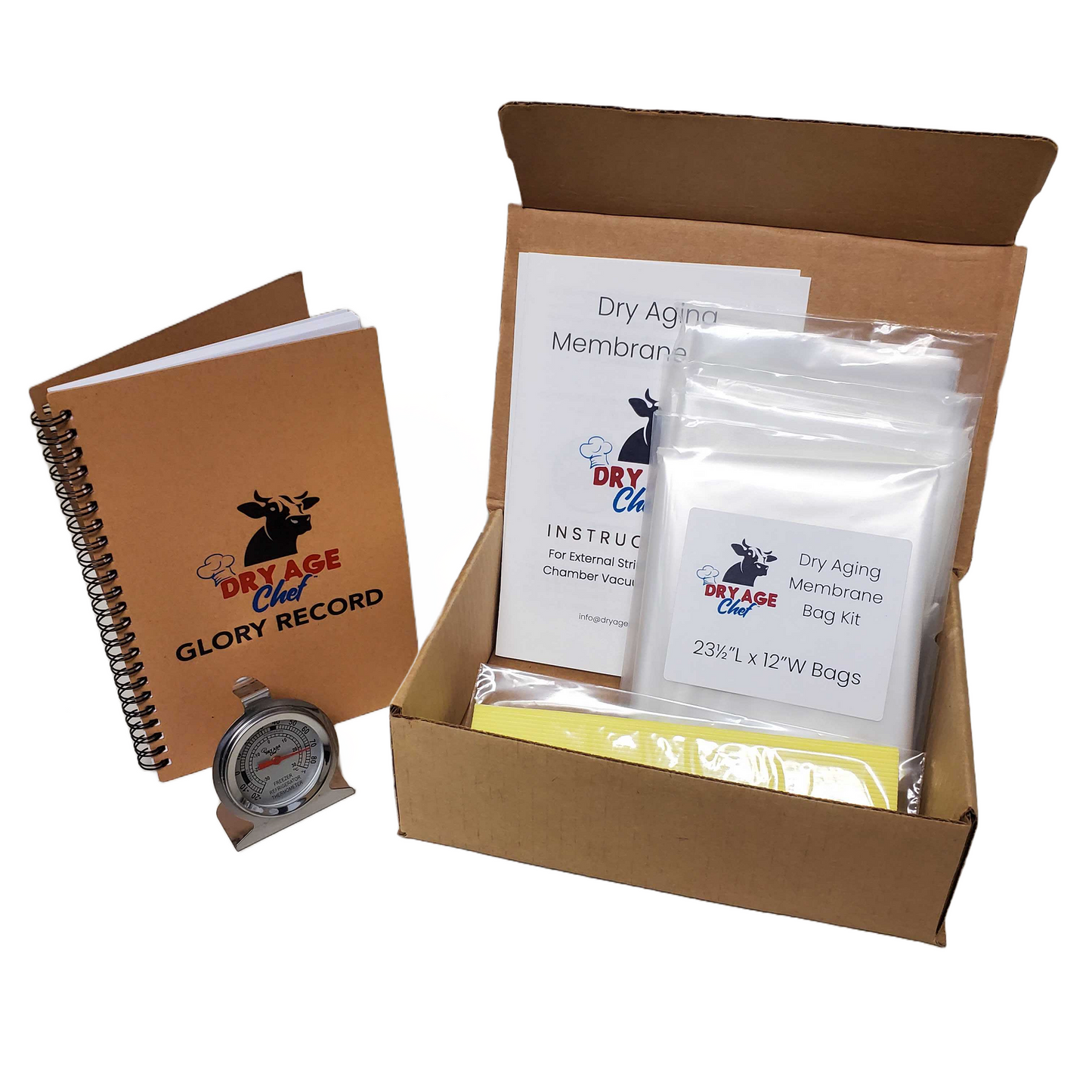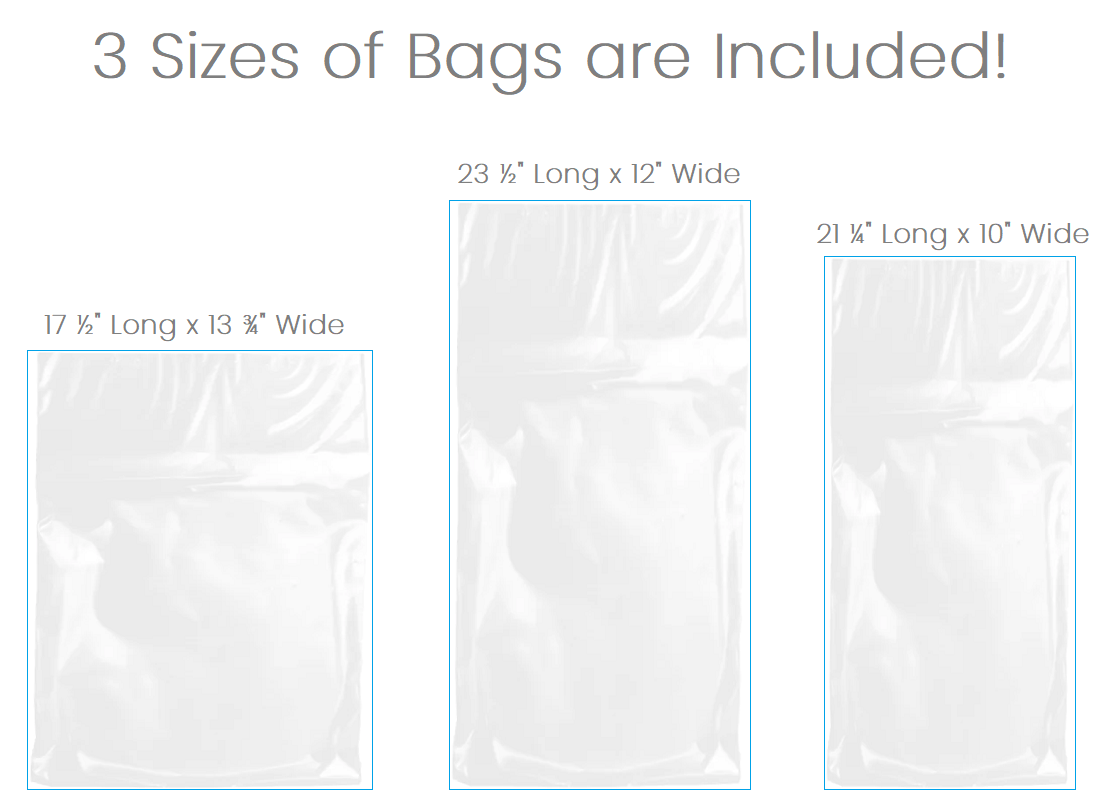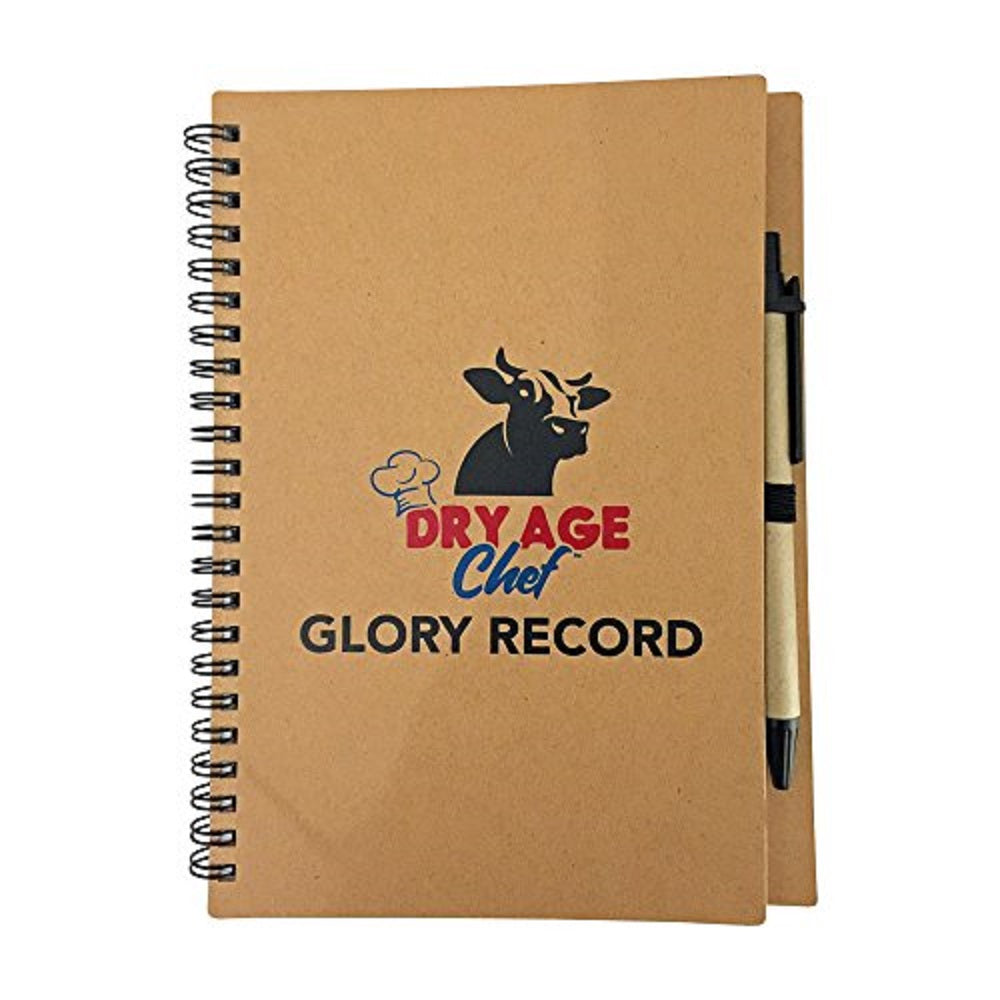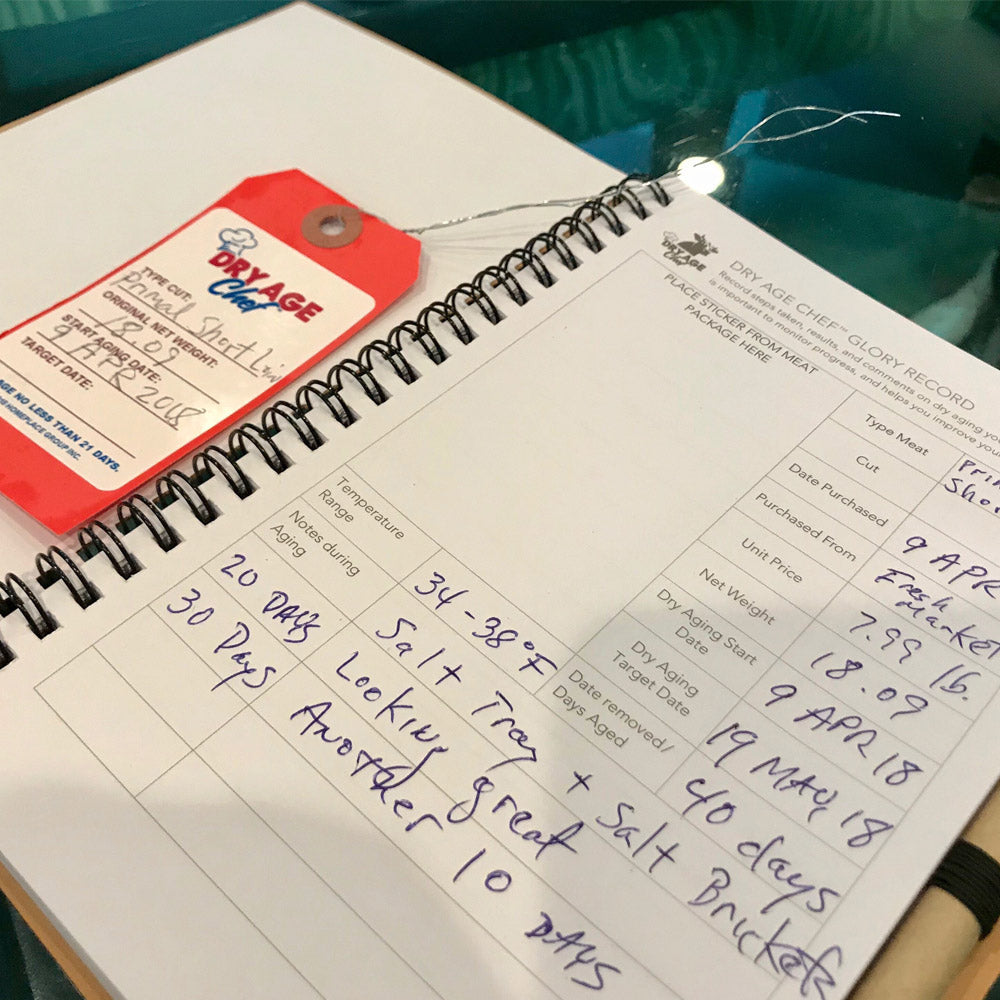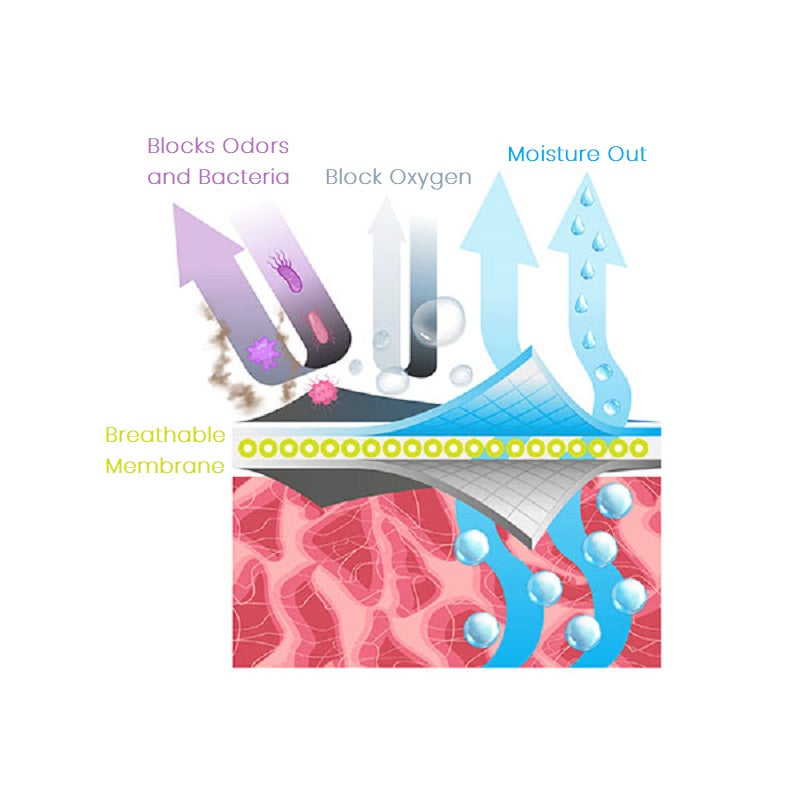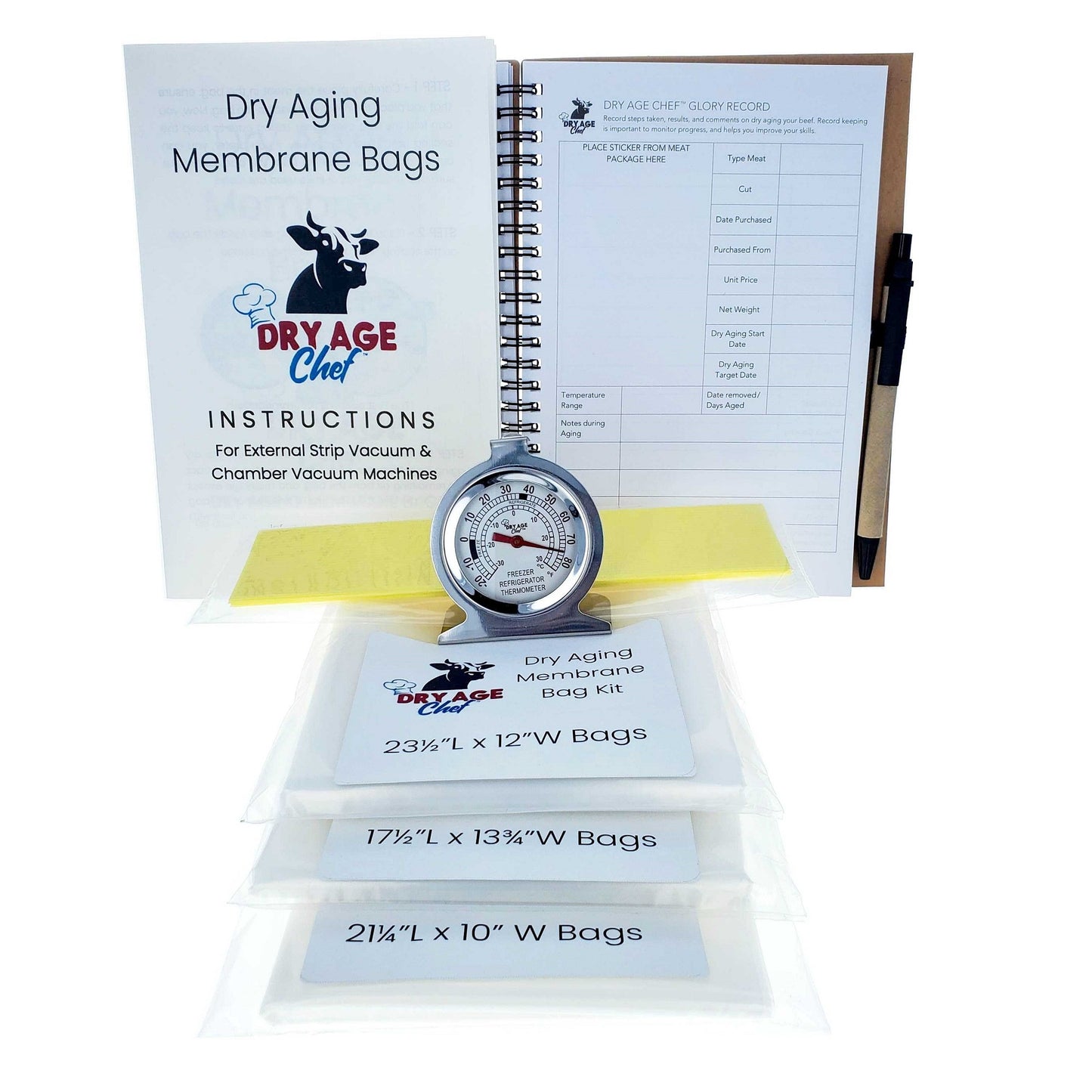Dry Aging Membrane Bag Kit by Dry Age Chef
Dry Aging Membrane Bag Kit by Dry Age Chef
DRY-AGED MEAT IS SERVED IN THE BEST RESTAURANTS.
This Kit has all that you need to prepare professional dry-aged meat at home: 15 Dry Age Membrane Bags (5 of each size), 15 Sealing Strips, a Refrigerator Thermometer, and the Glory Record Book to keep track of your successes.
The main benefits of Dry Age Bags are the mouth-watering concentrated flavors, the extreme tenderness of the finished product, and the beautiful, marbled appearance (especially on Sirloins and Rib-Eyes). Meat can also be smoked through the dry aging bag.
Dry-aging small cuts or individual steaks is not suggested as the results are often disappointing, with too much waste.
Dry Age Chef & Dry Aging Meat at Home!
- 17 ½" Long x 13 ¾" Wide Bags. The extra-long dry aging bag is designed for many bone-in sub-primal pieces that tend to run a bit wide for other bags. Dry aging bone-in beef goes together in cooking it with the bone-in-the most heavenly treat for your taste buds.
- 23 ½" Long x 12" Wide Bags. The 23½" long dry aging bags are ideal for longer pieces of beef. This would allow you to get the largest one at the store, thus losing less meat at the end to the pellicle.
- 21 ¼" Long x 10" Wide Bags. Standard Size Bags. The standard size is ideal for the average-size boneless roasts.
Dry aging beef bags employ a specially formulated combination of polymers, creating a single-layer material that is both moisture- and oxygen-permeable, like a membrane. Fragile when first sealed, the dry aging beef bag will form a bond with the moist proteins on the surface of the meat within the first several days. Once bonded, it protects against off flavors and contamination, allowing you to dry age in any commercial refrigeration unit without requiring UV lighting or specialized humidity control. The preferred method is to Vacuum Pack the Meat inside and create a perfect bond. This method does NOT pose the same risk of anaerobic bacterial growth as in other methods. Do not place stickers on the bag once you seal the meat, it will leave a mark on the meat. Just remember to ensure that the meat is mostly in contact with the bag because that would create the natural bond with the meat's moist surface proteins to ensure the best result.
Share
